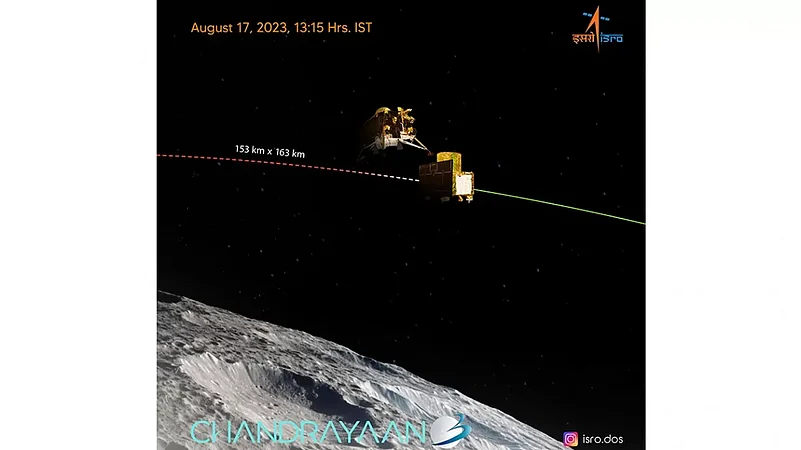The Chandrayaan-2 orbiter has established communication with the lander module of Chandrayaan-3, said Indian Space Research Organisation (ISRO) on Monday.
The Chandrayaan-2 orbiter has been circling Moon since 2019. Data gathered by the orbiter has been helping with the landing of Chandrayaan-3.
The Chandrayaan-3 is set to land on Moon on Wednesday at around 06:04 pm. Its descent would start at around 05.45 pm. After the crash of Russia's Luna-25, Chandrayaan-3 is set to be the first to land on the South Pole of the Moon.
In a post on Monday, ISRO wrote, "Chandrayaan-3 Mission: ‘Welcome, buddy!’ Ch-2 orbiter formally welcomed Ch-3 LM. Two-way communication between the two is established. MOX has now more routes to reach the LM. Update: Live telecast of Landing event begins at 17:20 Hrs. IST."
The MOX refers to the Mission Operations Complex (MOX), ISTRAC, Bengaluru.
The Chandrayaan-3 is India's second attempt at landing on Moon. Earlier in 2019, the lander element of Chandrayaan-2 crashed but the orbiter has continued to circle the Moon and provide crucial scientific insights that have also helped with the landing of Chandrayaan-3.
While Chandrayaan-3 has a lander named Vikram and a rover named Pragyaan as part of its lander module, it does not have an orbiter like Chandrayaan-2.
The Chandrayaan-3 has had a slow and steady march to the Moon from its launch on July 14. After entering Moon's orbit earlier this month, the spacecraft underwent multiple rounds of deboosting and the separation of lander from the propulsion module. Since entering the Lunar orbit, the Chandrayaan-3 has started sharing photos of the Lunar surface.
In a separate tweet on Monday, ISRO shared photos from Lander Hazard Detection and Avoidance Camera (LHDAC) and said it "assists in locating a safe landing area —without boulders or deep trenches— during the descent".
















